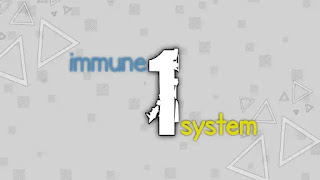اليوم نقدم لكم اهم الأسئلة المهمة حول المناعة البشرية. سنشمل اليوم اسئلة مناعة المحاضرة الأولى للجامعة المستنصرية.
تنقسم مادة المايكرو "microbiology" إلى ثلاث اقسام :
- طفيليات
- فيروسات
- مناعة
في كلية الصيدلة المرحلة الثانية تعتبر من المواد الوزارية المهمة. والتي تعني عدم اجتيازها عدن العبور الى المرحلة التالية في قسم الصيدلة.
سيتم ادراج جميع الأسئلة المهمة الخاصة بالمحاضرة الاولى الخاصة بالمناعة من الجامعة المستنصرية. والتي تعد من الجامعات المهمة ، وأن أغلب الطلاب اعتمدوا عليها.
Innate immunity
Which of the following is not an example of physical barrier in innate immunity
a) Skin
b) Mucus membranes
c) Saliva
d) Antibodies
Answer: d) Antibodies
Which cells are responsible for phagocytosis in innate immunity
a) B cells
b) T cells
c) Natural killer (NK) cells
d) Macrophages
Answer: d) Macrophages
Toll-like receptors (TLRs) are involved in innate immunity by recognizing
a) Pathogen-associated molecular patterns (PAMPs)
b) Antibodies
c) Tumor cells
d) Self-antigens
Answer: a) Pathogen-associated molecular patterns (PAMPs)
The complement system is part of innate immunity and functions by
a) Producing antibodies against pathogens
b) Activating T cells
c) Promoting inflammation
d) Enhancing phagocytosis and lysis of pathogens
Answer: d) Enhancing phagocytosis and lysis of pathogens
Which of the following is an antimicrobial protein involved in innate immunity
a) Interferon
b) Histamine
c) Interleukin-2
d) Insulin
Answer: a) Interferon
Natural killer (NK) cells are involved in innate immunity and primarily target
a) Bacteria
b) Viruses
c) Fungi
d) Parasites
Answer: b) Viruses
Inflammation is a key component of innate immunity and is characterized by
a) Redness, swelling, heat, and pain
b) Elevated blood pressure
c) Activation of T cells
d) Production of antibodies
Answer: a) Redness, swelling, heat, and pain
Which of the following is not a type of innate immune cell
a) Neutrophils
b) Eosinophils
c) Mast cells
d) Helper T cells
Answer: d) Helper T cells
The process of opsonization in innate immunity involves
a) Activation of complement proteins
b) Release of histamine
c) Phagocytosis of pathogens
d) Production of antibodies
Answer: a) Activation of complement proteins
The primary function of innate immunity is to
a) Recognize and remember specific pathogens
b) Provide immediate defense against a wide range of pathogens
c) Produce antibodies against specific antigens
d) Regulate the immune response
Answer: b) Provide immediate defense against a wide range of pathogens
Physiologic Barriers
Which of the following is an example of a physiologic barrier
a) Skin
b) Mucus membranes
c) Complement proteins
d) Neutrophils
Answer: b) Mucus membranes
Physiologic barriers in the respiratory system include
a) Cilia and mucus
b) Epidermis
c) Acidic pH in the stomach
d) Saliva
Answer: a) Cilia and mucus
The acidic pH in the stomach serves as a physiologic barrier against
a) Bacteria and viruses
b) Parasites
c) Toxins
d) Allergens
Answer: a) Bacteria and viruses
Lysozyme, an enzyme found in tears, saliva, and mucus, acts as a physiologic barrier by
a) Neutralizing toxins
b) Promoting inflammation
c) Destroying bacterial cell walls
d) Enhancing phagocytosis
Answer: c) Destroying bacterial cell walls
The normal flora or microbiota in the gastrointestinal tract act as a
a) Producing antibodies
b) Phagocytosing pathogens
c) physiologic barrier
d) Initiating an inflammatory response
Answer: c) physiologic barrier
The cilia in the respiratory tract helps in removing pathogens by
a) Activating natural killer (NK) cells
b) Producing mucus
c) Sweeping mucus and trapped particles upward for elimination
d) Initiating an allergic response
Answer: c) Sweeping mucus and trapped particles upward for elimination
The role of physiologic barriers in the immune system is to
a) Initiate an immune response
b) Prevent the entry and establishment of pathogens
c) Recognize and destroy specific pathogens
d) Coordinate the activities of immune cells
Answer: b) Prevent the entry and establishment of pathogens
Mechanisms of Innate Immunity
Which of the following is not a mechanism of innate immunity
a) Phagocytosis
b) Antibody production
c) Inflammation
d) Complement activation
Answer: b) Antibody production
The process by which phagocytes engulf and destroy pathogens is called
a) Opsonization
b) Complement fixation
c) Phagocytosis
d) Cytolysis
Answer: c) Phagocytosis
Which cells release histamine and other inflammatory mediators in response to tissue damage or infection
a) Macrophages
b) Neutrophils
c) Mast cells
d) Natural killer (NK) cells
Answer: c) Mast cells
The complement system is activated through three pathways. Which pathway is activated by antigen-antibody complexes
a) Classical pathway
b) Alternative pathway
c) Lectin pathway
d) All of the above
Answer: a) Classical pathway
The process of opsonization involves
a) Activation of complement proteins
b) Coating pathogens with antibodies or complement proteins
c) Release of histamine
d) Phagocytosis of pathogens
Answer: b) Coating pathogens with antibodies or complement proteins
Interferons are a group of proteins that are released in response to viral infections. They primarily function by
a) Promoting inflammation
b) Enhancing phagocytosis
c) Inhibiting viral replication
d) Killing infected cells
Answer: c) Inhibiting viral replication
Toll-like receptors (TLRs) are important components of innate immunity. They recognize
a) Pathogen-associated molecular patterns (PAMPs)
b) Self-antigens
c) Antibodies
d) Allergens
Answer: a) Pathogen-associated molecular patterns (PAMPs)
Natural killer (NK) cells are cytotoxic cells that can directly kill infected or cancerous cells. They do so by
a) Producing antibodies
b) Releasing perforin and granzymes
c) Activating complement proteins
d) Phagocytosing pathogens
Answer: b) Releasing perforin and granzymes
The acute-phase response is a part of innate immunity that occurs in response to infection or tissue injury. It is characterized by
a) Activation of B cells
b) Production of antibodies
c) Fever and increased production of acute-phase proteins
d) Activation of T cells
Answer: c) Fever and increased production of acute-phase proteins
The primary function of innate immunity is to
a) Recognize and remember specific pathogens
b) Provide immediate defense against a wide range of pathogens
c) Produce antibodies against specific antigens
d) Regulate the immune response
Answer: b) Provide immediate defense against a wide range of pathogens
Phagocytosis
Phagocytosis is a process carried out primarily by which type of immune cells
a) B cells
b) T cells
c) Natural killer (NK) cells
d) Phagocytes
Answer: d) Phagocytes
Which of the following is an example of a phagocyte
a) Neutrophil
b) Eosinophil
c) Mast cell
d) Dendritic cell
Answer: a) Neutrophil
The initial step of phagocytosis involves the recognition and attachment of pathogens to the phagocyte's surface through
a) Antibodies
b) Complement proteins
c) Toll-like receptors (TLRs)
d) Opsonins
Answer: d) Opsonins
Which of the following is not a phagocytic cell
a) Macrophage
b) Dendritic cell
c) T lymphocyte
d) Monocyte
Answer: c) T lymphocyte
The fusion of the phagosome with lysosomes forms a phagolysosome, which contains enzymes that
a) Promote inflammation
b) Destroy the pathogen
c) Produce antibodies
d) Regulate the immune response
Answer: b) Destroy the pathogen
Which of the following is a respiratory burst product released during phagocytosis that helps kill the engulfed pathogen
a) Histamine
b) Perforin
c) Nitric oxide
d) Interferon
Answer: c) Nitric oxide
Phagocytosis is an important defense mechanism against which types of pathogens
a) Bacteria
b) Viruses
c) Fungi
d) All of the above
Answer: d) All of the above
The process of phagocytosis is part of which line of defense in the immune system
a) Innate immunity
b) Adaptive immunity
c) Both innate and adaptive immunity
d) None of the above
Answer: a) Innate immunity
Natural Killer Cells
Natural killer (NK) cells are a type of
a) B cells
b) T cells
c) Antigen-presenting cells
d) Lymphocytes
Answer: d) Lymphocytes
NK cells are primarily involved in
a) Antibody production
b) Phagocytosis
c) Cell-mediated cytotoxicity
d) Complement activation
Answer: c) Cell-mediated cytotoxicity
NK cells can recognize and kill
a) Bacteria
b) Viruses
c) Cancer cells
d) b and c
Answer: d) b and c
The recognition of target cells by NK cells is based on the balance of inhibitory and activating signals received through
a) Toll-like receptors (TLRs)
b) Complement proteins
c) Major histocompatibility complex (MHC) class I molecules
d) Antibodies
Answer: c) Major histocompatibility complex (MHC) class I molecules
NK cells can directly kill target cells by inducing
a) Apoptosis
b) Phagocytosis
c) Opsonization
d) Inflammation
Answer: a) Apoptosis
The primary mechanism by which NK cells kill target cells is by releasing
a) Interferons
b) Complement proteins
c) Antibodies
d) Perforin and granzymes
Answer: d) Perforin and granzymes
The activity of NK cells is regulated by the balance of activating and inhibitory signals received through
a) Cytokines
b) Toll-like receptors (TLRs)
c) Killer cell immunoglobulin-like receptors (KIRs)
d) Complement proteins
Answer: c) Killer cell immunoglobulin-like receptors (KIRs)
NK cells play a crucial role in immune surveillance against
a) Bacterial infections
b) Parasitic infections
c) Viral infections
d) Allergies
Answer: c) Viral infections
NK cells are primarily associated with which line of defense in the immune system
a) Innate immunity
b) Adaptive immunity
c) Both innate and adaptive immunity
d) None of the above
Answer: a) Innate immunity
Mediators of Inflammation: Cytokine
Cytokines are
a) Proteins
b) Lipids
c) Carbohydrates
d) Nucleic acids
Answer: a) Proteins
Cytokines are secreted by various cells, including
a) Neutrophils
b) Macrophages
c) T lymphocytes
d) All of the above
Answer: d) All of the above
Which of the following is not a function of cytokines
a) Regulating immune cell growth and differentiation
b) Promoting inflammation
c) Enhancing phagocytosis
d) Neutralizing toxins
Answer: d) Neutralizing toxins
Interleukins (ILs) are a group of cytokines that mediate communication between:
a) Immune cells
b) Nervous cells
c) Muscle cells
d) Epithelial cells
Answer: a) Immune cells
Tumor necrosis factor-alpha (TNF-alpha) is a cytokine that plays a key role in
a) Promoting inflammation
b) Inhibiting phagocytosis
c) Regulating body temperature
d) Enhancing antibody production
Answer: a) Promoting inflammation
Interferons (IFNs) are cytokines primarily involved in
a) Enhancing phagocytosis
b) Killing infected cells
c) Neutralizing toxins
d) Regulating inflammation
Answer: b) Killing infected cells
Transforming growth factor-beta (TGF-beta) is a cytokine that has various functions, including
a) Promoting tissue repair
b) Activating natural killer (NK) cells
c) Enhancing antibody production
d) Initiating an allergic response
Answer: a) Promoting tissue repair
Chemokines are a group of cytokines that are primarily involved in
a) Regulating body temperature
b) Promoting inflammation
c) Inhibiting phagocytosis
d) Killing infected cells
Answer: b) Promoting inflammation
Cytokines can act in an autocrine manner, meaning they
a) Regulate neighboring cells
b) Regulate the same cell that secreted them
c) Regulate distant cells through the bloodstream
d) Regulate only immune cells
Answer: b) Regulate the same cell that secreted them
The dysregulation of cytokines can contribute to the development of
a) Autoimmune diseases
b) Bacterial infections
c) Allergic reactions
d) Viral infections
Answer: a) Autoimmune diseases



تعليقات
إرسال تعليق